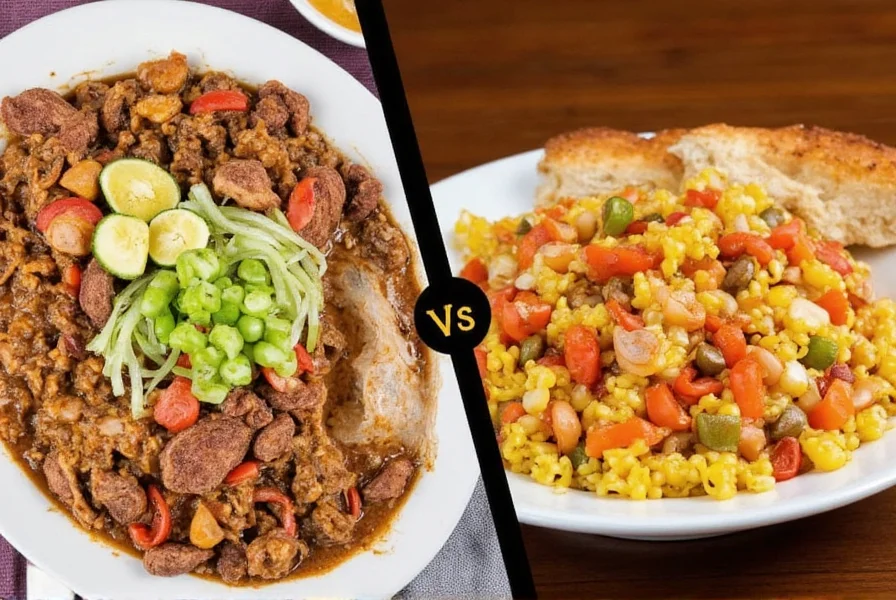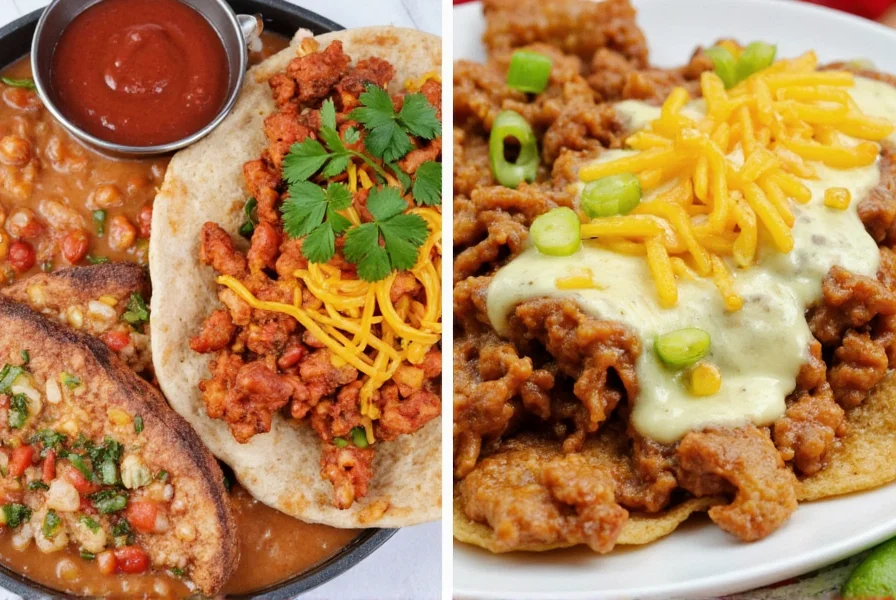Creole Food vs Cajun Food: A Flavorful Comparison for Spice Lovers
Table of Contents
Introduction to Creole and Cajun Cuisine
When it comes to the world of spicy, rich, and aromatic cuisines, few can rival the bold flavors of Creole and Cajun food. Originating from Louisiana, these two culinary traditions have captivated the palates of people around the globe. But what exactly sets them apart? This article dives into the nuances of Creole food vs Cajun food, offering a flavor-packed guide for both spice enthusiasts and professionals in the food industry.

Key Differences Between Creole and Cajun Food
The first thing to understand is that while both Creole and Cajun cuisines are rooted in Louisiana, they stem from different cultural backgrounds and have distinct characteristics. Creole cuisine, influenced by French, Spanish, African, and Caribbean traditions, tends to be more refined and complex. On the other hand, Cajun food, with its roots in the Acadian region of Canada and later settled in Louisiana, is known for its rustic, hearty, and bold flavors.
To help you grasp the difference better, here’s a quick comparison:
| Aspect | Cajun Food | Creole Food |
|---|---|---|
| Origin | Acadian settlers (now Louisiana) | French, Spanish, African, and Caribbean influences |
| Flavor Profile | Hearty, bold, and often spicy | Refined, layered, and sometimes milder |
| Ingredients | Local seafood, pork, and root vegetables | More varied, including tomatoes, okra, and shellfish |
| Cooking Style | Slow-cooked, one-pot meals | More varied, with an emphasis on balance |

Flavor Profiles and Cooking Techniques
One of the most noticeable differences between Creole and Cajun food lies in their flavor profiles. Cajun cuisine often uses a blend of spices such as cayenne pepper, paprika, and garlic to create a fiery, robust taste. It's all about big, bold flavors that hit your palate right away.
Creole food, by contrast, takes a more balanced approach. While it can be spicy, it also incorporates ingredients like tomatoes, onions, and bell peppers to create a more complex and layered flavor. The use of herbs like thyme, oregano, and bay leaves is common in Creole dishes, giving them a more aromatic quality.
Another key factor is the cooking technique. Cajun food is often prepared using a “one-pot” method, such as gumbo or jambalaya, where all the ingredients are cooked together in a single pot. This method allows the flavors to meld and intensify over time. Creole cooking, however, may involve more precise techniques, such as sautéing, braising, or simmering, depending on the dish.

Popular Dishes in Both Cuisines
To truly appreciate the differences between Creole and Cajun food, it helps to look at some of their signature dishes:
- Cajun Dishes:
- Gumbo: A thick stew made with a roux base, featuring seafood, chicken, or sausage, and seasoned with cayenne and other spices.
- Jambalaya: A rice dish with meat, seafood, and vegetables, seasoned with a mix of spices and sometimes served with a side of andouille sausage.
- Boudin: A sausage made from pork, rice, and seasoning, often enjoyed as a street food.
- Creole Dishes:
- Shrimp and Grits: A classic Creole dish featuring creamy grits topped with sautéed shrimp, often seasoned with a touch of cayenne.
- Etouffee: A dish similar to gumbo but with a thicker sauce, usually made with crawfish, shrimp, or chicken.
- Jambalaya (Creole Style): A version of jambalaya that includes tomatoes and more vegetables, creating a richer, more colorful dish.

Buying Guide for Spices and Ingredients
If you're looking to bring the flavors of Creole and Cajun food into your kitchen, having the right spices and ingredients is essential. Here's a practical guide to help you choose the best products for your needs:
1. Creole Seasoning
Celebrated for its bold and complex flavor, Creole seasoning is a must-have for anyone interested in this cuisine. Look for blends that include paprika, garlic powder, onion powder, cayenne, thyme, and oregano. Some premium blends may also include additional herbs like basil or marjoram for a more nuanced profile.
2. Cajun Seasoning
Unlike Creole seasoning, Cajun seasoning is typically spicier and more pungent. Common ingredients include cayenne pepper, black pepper, paprika, garlic, and onion powders. For a more authentic experience, choose blends that include dried oregano and cumin.
3. Andouille Sausage
A staple in both cuisines, andouille sausage adds a smoky, spicy kick to many dishes. Look for high-quality links made from pork and seasoned with a mix of spices. It's perfect for jambalaya, gumbo, or even grilled as a side dish.
4. Gumbo File
Gumbo file is a powder made from the ground leaves of the sassafras tree and is used to thicken and flavor gumbo. It adds a unique, earthy note that's characteristic of traditional Creole recipes. Choose a fine, dark green powder for the best results.
5. Fresh Herbs
While dried herbs are commonly used, fresh herbs like parsley, thyme, and bay leaves can elevate your Creole and Cajun dishes. They’re especially useful in dishes like étouffée or shrimp and grits.
Conclusion
In summary, Creole food vs Cajun food is a fascinating study of how culture, history, and geography shape the way we eat. Whether you prefer the bold, rustic flavors of Cajun cuisine or the refined, layered taste of Creole dishes, both offer a rich and satisfying culinary experience. By understanding the key differences and exploring the popular dishes, you can deepen your appreciation for these vibrant traditions and bring their delicious flavors into your own kitchen.
So, whether you're a seasoned chef or just starting out, don’t forget to experiment with the spices and techniques that define Creole and Cajun food. After all, the best way to learn is to taste—and there’s no better way to do that than by diving into the world of these iconic cuisines.











 浙公网安备
33010002000092号
浙公网安备
33010002000092号 浙B2-20120091-4
浙B2-20120091-4